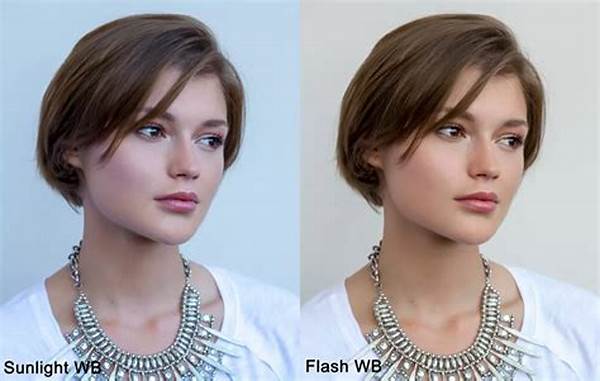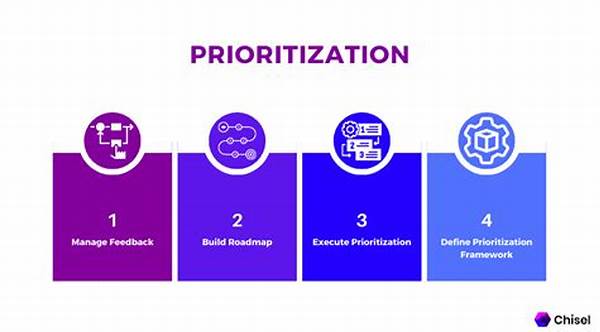Hey there, fellow shutterbugs! Let’s chat about something that might be messing with your stunning portrait shots without you even realizing it—incorrect portrait camera settings. It’s one of those things that’s easy to overlook but has a huge impact on the final product. Whether you’re new to portrait photography or a seasoned pro, making sure your camera settings are spot on takes your photos from meh to magnificent.
Read Now : “leading Lines In Nature Photography”
The Impact of Incorrect Portrait Camera Settings
Incorrect portrait camera settings can really wreak havoc on your photography. You might think the lighting looks fine and your camera’s auto mode has got it covered, but it’s not that simple. Lighting, focus, aperture—these are the sacred trifecta when it comes to shooting portraits. When any of these are off, you’re going to end up with photos that lack the essential clarity and depth needed to make your subject shine.
One common mistake is having the aperture too wide open. While a low f-stop number gives you that coveted blurry background, going too low can make your image too soft, leaving important facial details slightly out of focus. Then there’s the issue with shutter speed. If it’s too slow, even the slightest movement can blur your subject, turning what could have been a stunning portrait into a disappointing capture. Don’t even get me started on ISO settings! Higher ISO can create grainy images—fine for a gritty, moody look, but not ideal for crisp, clean portraits.
Often overlooked but super important is white balance. It affects how colors appear in your photos. Incorrect portrait camera settings with the wrong white balance can result in unnatural skin tones. Simply relying on auto mode might not always do the trick. Doing a quick white balance check or using a gray card can save you lots of hassle in post-editing.
Common Mistakes in Portrait Settings
1. Neglecting Depth of Field: Incorrect portrait camera settings can lead to a background that’s too sharp, stealing attention from your subject.
2. Overlooking Shutter Speed: Even small movements can blur the shot if your settings aren’t right.
3. Too Much ISO: Incorrect portrait camera settings with high ISO create unwanted noise in your photos.
4. Ignoring Focus Points: Letting auto-focus take control can result in misplaced emphasis in your shot.
5. Poor Lighting Adjustment: Incorrect portrait camera settings without proper lighting control can ruin a good composition.
Identifying Incorrect Settings in Portrait Photography
Spotting incorrect portrait camera settings might seem challenging, but it’s easier than you think once you know what to look for. First, scrutinize the sharpness of your images: are the eyes in focus? Eyes are naturally the focal point of any portrait, so ensuring they are razor-sharp should be priority number one. If you find your subjects looking a bit soft, it’s time to re-evaluate your focus settings or consider using a narrower aperture to increase depth of field.
Lighting is another critical element. If your photos are coming out too dark or too bright, it’s a clear sign your exposure settings might be off. Remember, you can control this with a combination of shutter speed, aperture, and ISO. Experimenting with these settings until your subject is well-lit can make a massive difference in image quality. Lastly, the color balance of your portrait is key; if your subject’s skin tones appear off, your white balance settings likely need adjustment.
Fixing Incorrect Portrait Camera Settings
1. Reevaluate Your Aperture: Ensure it’s not too wide to keep your subject in focus.
2. Adjust Shutter Speed: Fast enough to capture crisp images without blur but not too fast to lose light.
3. Tweak ISO Sensitivity: Use the lowest ISO possible for clean, noise-free images.
4. Customize White Balance: Make sure your light source matches the camera’s white balance setting.
5. Focus Precision: Use single-point focus to keep key details like the eyes super sharp and clear.
Read Now : Streamline Sentences For Readability
6. Light and Shadows: Properly using external lights or reflectors can enhance the subject’s features.
7. Background Management: Use a larger aperture to softly blur busy backgrounds for more focus on the subject.
8. Check Your Equipment: Sometimes the issue isn’t the settings but a smudged lens or malfunctioning sensor.
9. Experiment with Modes: Try different modes like manual or aperture priority to get better control.
10. Practice!: Constantly reviewing and learning from each shoot will improve your handling of incorrect portrait camera settings.
Evaluating Aperture in Incorrect Portrait Camera Settings
So, let’s zoom in—literally and figuratively—on how aperture affects portrait photos. Incorrect portrait camera settings concerning aperture can totally change the vibe of your images. Aperture controls how much light hits the sensor, but it also affects depth of field. For stunning portraits, you typically want your subject in sharp focus against a dreamy, blurred background.
A common mistake is using too wide an aperture, think f/1.2 or f/1.4, which can create a depth of field that’s TOO shallow. Imagine capturing a jaw-dropping smile but realizing later that only the tip of the nose is in focus! That’s why it’s important to strike a balance; somewhere around f/2.8 or f/4 could be the sweet spot. This ensures enough of the subject stays super sharp while the background transforms into that creamy bokeh we all love.
The key takeaway is to not fall into the trap of thinking wider is automatically better. Play around with different settings and see what works best for the scenario at hand. Remember, a portrait isn’t just about capturing a face; it’s about capturing an essence. Get those incorrect portrait camera settings right, and you’ll see your portraits evolve from flat and lifeless to vibrant and full of emotion!
Shooting with Style: Avoiding Incorrect Portrait Camera Settings
Yo, let’s keep it real. If you want those portraits to pop, you gotta ditch those incorrect portrait camera settings, man. First off, let me highlight the focus game. If your shots look like a hazy daydream, you’ve got too much blur, and that ain’t artsy—it’s just wrong.
Lighting? Say it with me: It’s all about that natural glow without those shadows creeping in. Better wrestle with that ISO setting if you don’t want your pics to look like grainy snaps from a party in the ’90s. Don’t get lazy on the white balance, too. Sunshine ain’t the same as neon lights, ya know?
Play smart with your shutter speed, folks. Too slow, and movements will ghost up your scene. Wanna nail that killer portrait look? Think balance, think adjustments, think finesse. Don’t lock horns with your settings; make them dance to your tune. Swap out those incorrect portrait camera settings, and you’ll go from “meh” to pro real quick.
Wrap-up on Incorrect Portrait Camera Settings
So, what’s the deal with incorrect portrait camera settings? It’s all about refining those details for the perfect shot. Even a slight mishap on an f-stop or shutter speed can derail your creative vision. But no worries! Getting the hang of it isn’t as hard as it seems.
It’s simple, really—start by experimenting with your camera, play around with settings, and see what works best for you. Being conscious of things like focus points, ISO, and lighting is crucial for achieving stunning portraits. They say a picture is worth a thousand words, and you’ve got the power to make every click count. Embrace those tweaks and transformations; getting past those incorrect portrait camera settings will be as satisfying as capturing that perfect smile.



